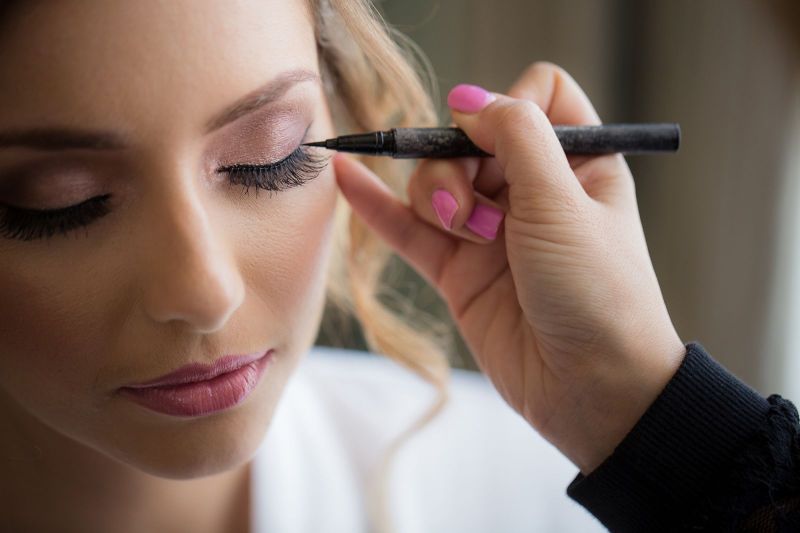How You Shot It is a series where you show us how you shot an image. Many who use our presets love to share their special processing recipes. You can join the SLR Lounge Textures and Presets group on Facebook and share your favorite images and recipes as well!
Today’s post comes from Eric James Walsh.

I grew up a big fan of rare cars and motorcycles. I heard a friend of a friend had just completed restoration on his 1959 Chevy Corvette convertible and I jumped at the opportunity to create a very unique photograph of his prized possession.
Painting with Light and Why it Worked for This Shot
Painting with Light is a style of photography where the creator uses either a continuous light source or flash to “paint” a scene with light. Not to be confused with Light Drawing where the user wields a light source facing the camera to create a specific pattern or Kinetic Light Painting where the camera is moved during the exposure. There are an infinite number of ways to paint a scene with light, but I’ll be sharing a technique I use that I’ve found to work best for me.

For me, painting with light is the ultimate in creative freedom as a photographer. Notice how the ambient light provided gives not only a very flat washed out feel to the setting, but the specular surface of both the automobiles and checkered floor yields every reflection and scuff mark. Rather than work along with the large ambient light source to create the desired scene, I opted to paint with light for complete lighting control over the entire photographic domain. For my vision of this shot, it was necessary for me to manufacture every single shadow, streak of light, and patch of exposed subject matter to the camera. Guess I’m a bit of a control freak. 🙂
Gear:
- A very stable & heavy tripod with (sand bags mounted at the base for additional weight and stability)
- Canon 5D Mark II
- Canon 24-70mm f2.8
- Macbook Pro (tethered to the camera for optimal viewing and zooming capabilities)
- 3 foot Octacool octobox (continuous light source)
- An assistant
Camera settings
- Aperture: f16
- ISO: 100
- Focal Length: 28mm
- Shutter: 5 seconds (165 exposures taken, 56 exposures used in final composite)
- White Balance: Daylight
Production Process
First and foremost, there is always much care put into creating the physical landscape of the scene before shooting begins. Knowing there would be 2+ hours spent shooting, we took much time comprising the physical scene and camera position to the exact creative requirement. With everything in place, we shut the lights off and began to paint. I had my trusty assistant Adam commanding the shutter release while I began to “paint” the scene with light. During the shooting process, I’d be asking Adam for feedback each frame to get a real time idea on how it’s developing. Also, every few frames I would pace back to my computer monitor to view past frames and ensure accurate exposure and lighting pattern.

Over the years, I’ve gone through a great deal of experimentation with the actual light painting process. I’ve used everything from flashlights, to large studio strobes, softboxes, and everything in between. What I’ve found works best is a large continuous soft light source. In this case, I’m using a daylight balanced 3 foot Octacool octabox. You’ll notice the shape of the light in a few images along with the streaking pattern above the primary subject.


The trickiest part of the production is keeping tabs on which elements of the scene have been covered. I prefer to shoot RAW + Small jpg while shooting my painted scenes. What this does is it gives me an efficient opportunity to layer the small jpgs atop each other in Photoshop to assure every inch of the environment is accounted for.
The final touch of the composite was the vertical streaks of light toward the top of the image. Despite all the pre-shot planning, I feel it’s paramount to stay flexible and organic for on location productions. I felt there was too much dark negative space atop the scene as I reviewed all the images created. For that, I used a speed light pointed upward from the ground floor.

Post Production
My post processing began when I imported all 165 exposures in to Adobe Lightroom. I selected all usable files and adjusted exposure only slightly. The mindset is to keep an exposure value as similar to one another as possible to uphold a sense of realism and consistency in the final composite. Once complete, I’ll convert the files to Tiffs and export them in anticipation for the Photoshop work. The key in Photoshop is to select your absolute best image for each segment of the overall image. Once you’ve got your base layer, you can begin adding on additional layers and masking only the segment of the image you wish to keep in the final composite. The key is to set the blending mode to “Lighten” which allows only the illuminated segment of the frame to show through.

Once every layer of my choosing has been properly blended, I added a little contrast using curves and a vignette to bring the image all together.

About the “How to Shoot It” Series
This educational series highlights amazing images from our writers as well as our community. The goal is to not only feature inspirational work but to provide valuable education for our photography community. If you would like to submit your work, please click here for more info on writing for SLR Lounge.













